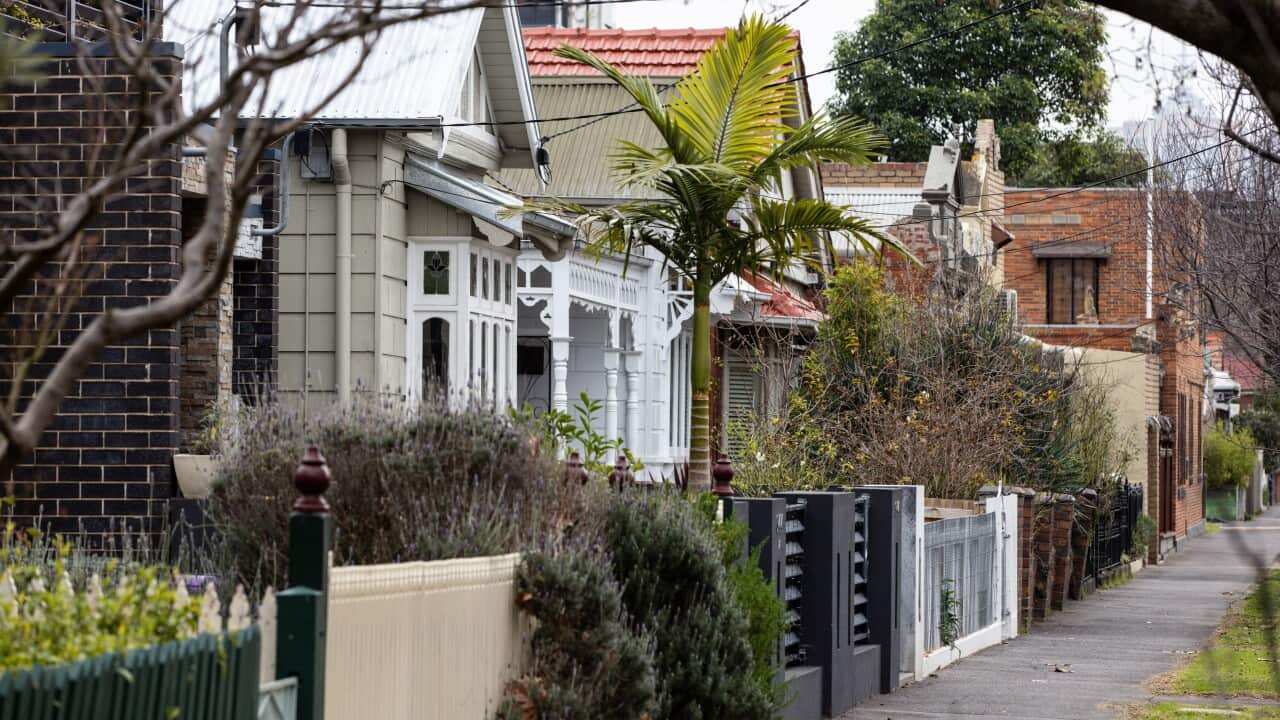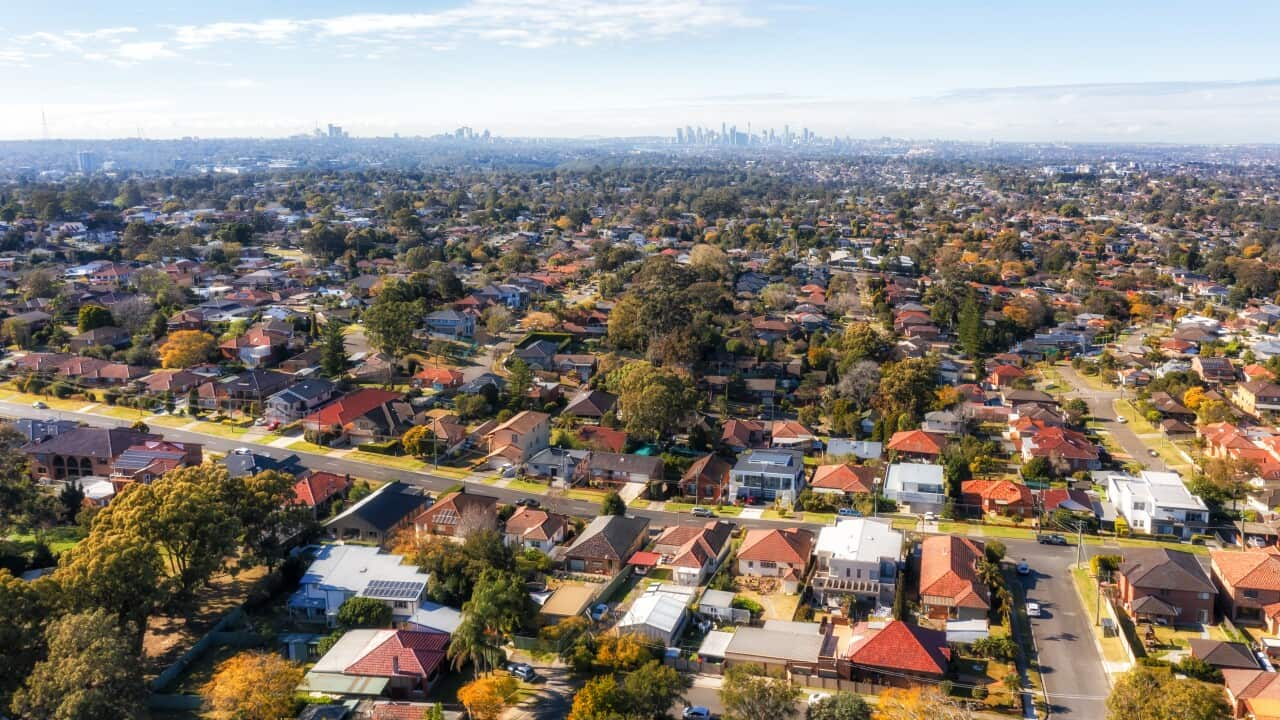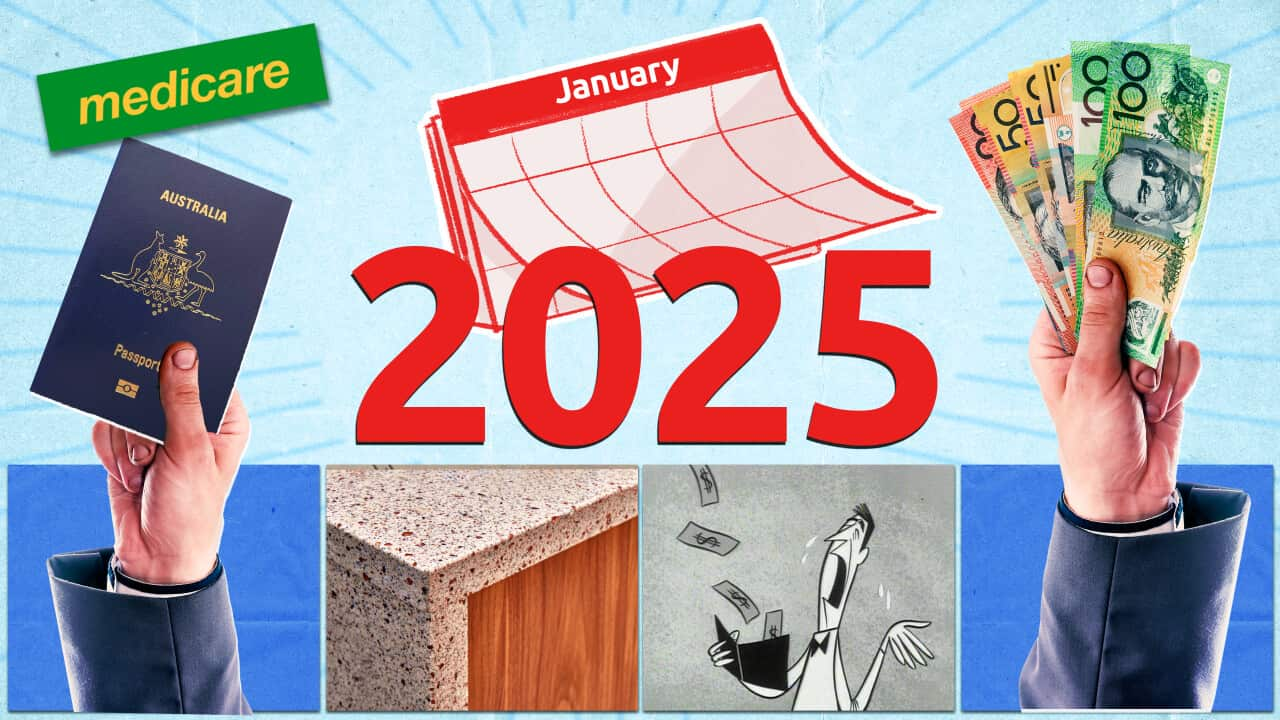KEY POINTS:
- The Reserve Bank of Australia has raised its cash rate by a quarter of a percentage point to 3.35 per cent.
- The RBA is trying to dampen spending in order to put a lid on inflation.
- RBA governor Philip Lowe says he expects further increases in interest rates.
The Reserve Bank of Australia (RBA) has raised its cash rate by a quarter of a percentage point to 3.35 per cent and warns there will be more hikes to come, inflicting yet more pressure on mortgage holders.
Tuesday's increase is the ninth since last May and takes the cash rate to its highest level since September 2012.

RBA governor Philip Lowe said while global factors explain much of this high inflation, strong demand is also adding to inflationary pressures. Source: SBS News
RBA Governor Philip Lowe warned there would be more pain ahead this year for mortgage holders.
"Global inflation remains very high … it will be some time, though, before inflation is back to target rates," he said in a statement on Tuesday.
The RBA has said it wants to return inflation to the 2–3 per cent range over time. Mr Lowe said on Tuesday he forecast inflation to decline to 4.75 per cent this year and to around 3 per cent by mid-2025.
"The Board expects that further increases in interest rates will be needed over the months ahead to ensure that inflation returns to target and that this period of high inflation is only temporary," Mr Lowe wrote.
Treasurer Jim Chalmers said while the government couldn't "interfere" with the RBA's decision, it was focused on delivering cost-of-living relief to Australians.
"It’s our job to focus on the broader pressures that are coming at us from around the world and being felt around the kitchen tables of this country," he said in Canberra on Tuesday afternoon.
"Think cheaper early-childhood education, cheaper medicines and also taking some of the sting out of electricity price rises that we expect to see in our economy. The second part of our plan is obviously to deal with the issues in our supply chains and in our workforce."
The rise in inflation is far outpacing wage growth, which increased by just 3.1 per cent over the year to September 2022, with public sector wages growing just 2.3 per cent, while household purchasing power continues to fall.
What can Australians expect from here?
Past rate hikes are already hurting household budgets, with the banks expected to pass this latest rise onto customers quickly.
For the average borrower with a $500,000 loan, the rate increase will mean an extra $908 a month since the start of the hikes last May, according to financial comparison site RateCity.
For a $750,000 loan, the increase will mean an extra $114 a month or $1,362 since the RBA started lifting rates in May.
Mr Lowe said that as economic growth slows, we can expect unemployment to increase from its current 3.5 per cent to 3.75 per cent by the end of the year and 4.5 per cent by mid-2025.
At the same time, wages growth will continue to pick up from the low rates of recent years.
The RBA governor added he was aware some Australians were doing it tough.
"Some households have substantial savings buffers, but others are experiencing a painful squeeze on their budgets due to higher interest rates and the increase in the cost of living. Household balance sheets are also being affected by the decline in housing prices," he said.
But he warned the uncertainty would continue.
"Another source of uncertainty is how the global economy responds to the large and rapid increase in interest rates around the world. These uncertainties mean that there are a range of potential scenarios for the Australian economy," he said.
Will next year look better?
Bill Evans, chief economist at Westpac, told SBS News when the RBA does put rates on hold, it "may generate some optimism in the housing market".
"I think generally a weak economy will tend to weigh on housing until we see the rate cuts in 2024," he added.
AMP's chief economist Shane Oliver told SBS News next year "will start to look better".
"This year the inflation rate will probably still exceed the rate of growth in wages but as the year goes on there will be more light at the end of the tunnel as inflation pressure start to recede. So I think we're probably going through about the worst of it now," Mr Oliver said.
"Next year we'll be seeing a declining inflation rate, prices will still be high but the rate of increase will slow down and wages will have probably caught up and exceeded the inflation rate and interest rates will have hit their peak."
Mr Oliver it was important to remember that while the cash rate may seem high right now, it's still extremely low compared to the 17 per cent we saw in 1990.

Economists say while the cash rate may seem high right now, it is relatively low compared to the rates we saw 30 years ago. Source: SBS News
What should borrowers do right now?
Around 800,000 fixed-interest mortgages are set to convert to variable rates in 2023, according to the Finance Brokers Association of Australia (FBAA), which for many could lead to a significant and sudden increase in their repayments.
FBAA managing director Peter White said borrowers should research their options ahead of time by using online comparison tools.
“If you leave it to the last minute to consider what to do, your choices will be more limited," Mr White said.
For those coming off a fixed rate or looking to refinance, they must decide if they would prefer a fixed or variable rate mortgage.
While variable rates may subject you to the pain of further rate rises, they also offer the most flexibility, he said. "Fixed-rate loans are less flexible and often come with high early-exit fees, so if you want to renovate, install a pool, take money from the mortgage for a holiday, or refinance in the near future, a variable rate may be the best option."

For those coming off a fixed-rate mortgage this year or looking to refinance, they should research their options ahead of time, says an expert. Source: AAP / Bianca De Marchi
"While refinancing can mean a lower interest rate and even a cash incentive, these may be offset by fees and exit costs. Nothing is free and there are times when it is more expensive to refinance. In these cases, it may be best to stick with your current lender and try and renegotiate," he said.
Renegotiating could mean extending the life of the loan or moving to interest-only repayments.
And do shop around, he added.
"Most borrowers don’t know the range of lenders available to them. While everyone knows the major banks, a significant percentage of mortgages are now being written by second-tier and non-bank lenders which are less known. These lenders can be very competitive, and can also be more flexible, which often suits for example small business owners with varying incomes, or those with past credit issues," he said.
And what about those looking to buy a home?
It's a tough time for first homebuyers; they've been waiting years for property prices to soften but now they have, they're slugged with reduced borrowing capacity and higher interest rates and repayments.
Credit reporting agency Equifax reported a drop-off in mortgage demand, down 16.1 per cent in the final quarter of last year, influenced by rate hikes and the rising cost of living.
Steve Mickenbecker, finance expert at financial comparison site Canstar, said: “With each further 0.25 per cent interest rate increase, the borrowing capacity of an average income earner falls by around $10,000."
"Hopeful homebuyers will need to go back to the drawing board to reappraise their property expectations."
To help boost their borrowing power, Canstar advises people to clear unused credit card limits, which may seem like a safety net but can reduce borrowing power; seek out lower rate loans, which enable you to borrow more; and find ways to boost your income, such as a pay rise.
A pay rise on the average gross annual income of $92,000 of 5 per cent or close to $5,000 for a solo buyer can deliver $26,000 in newfound borrowing power. For a couple who are both able to secure a 5 per cent pay rise, an extra $9,200 could add an extra $53,000 to borrowing power, Canstar said.
And while there is a risk of more rate hikes, buyers can be comforted by predictions of further price falls this year and less competition in the market.












